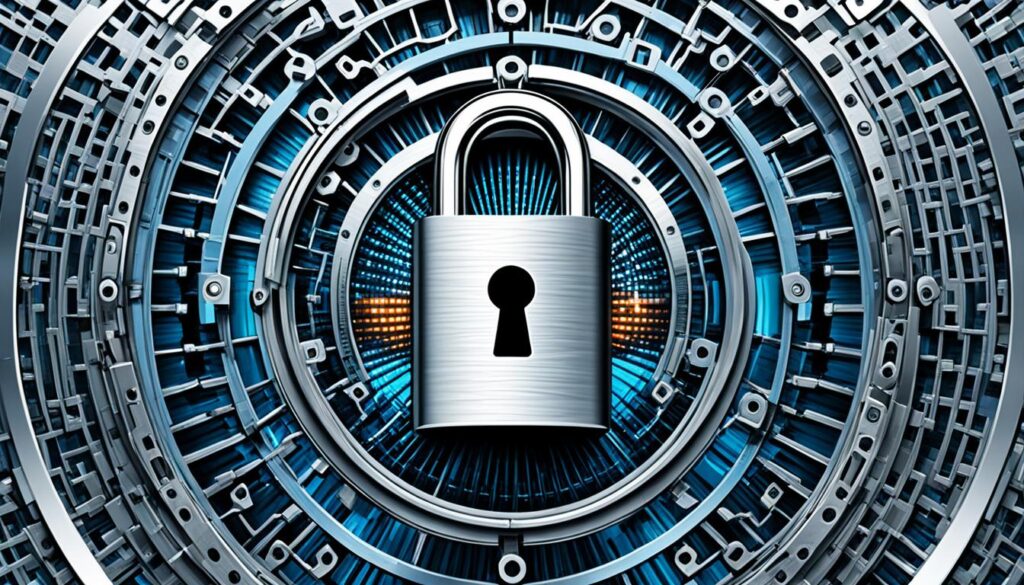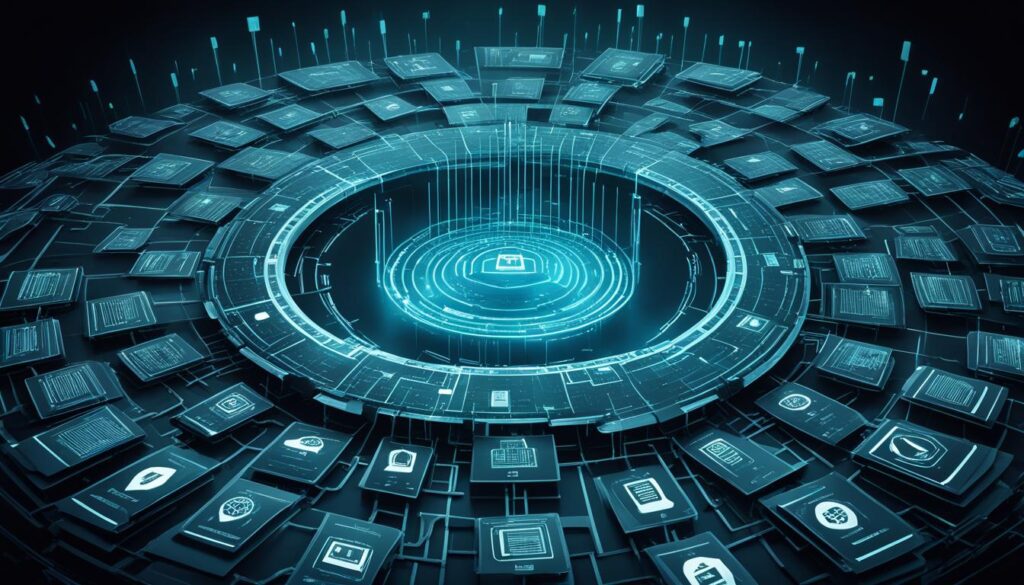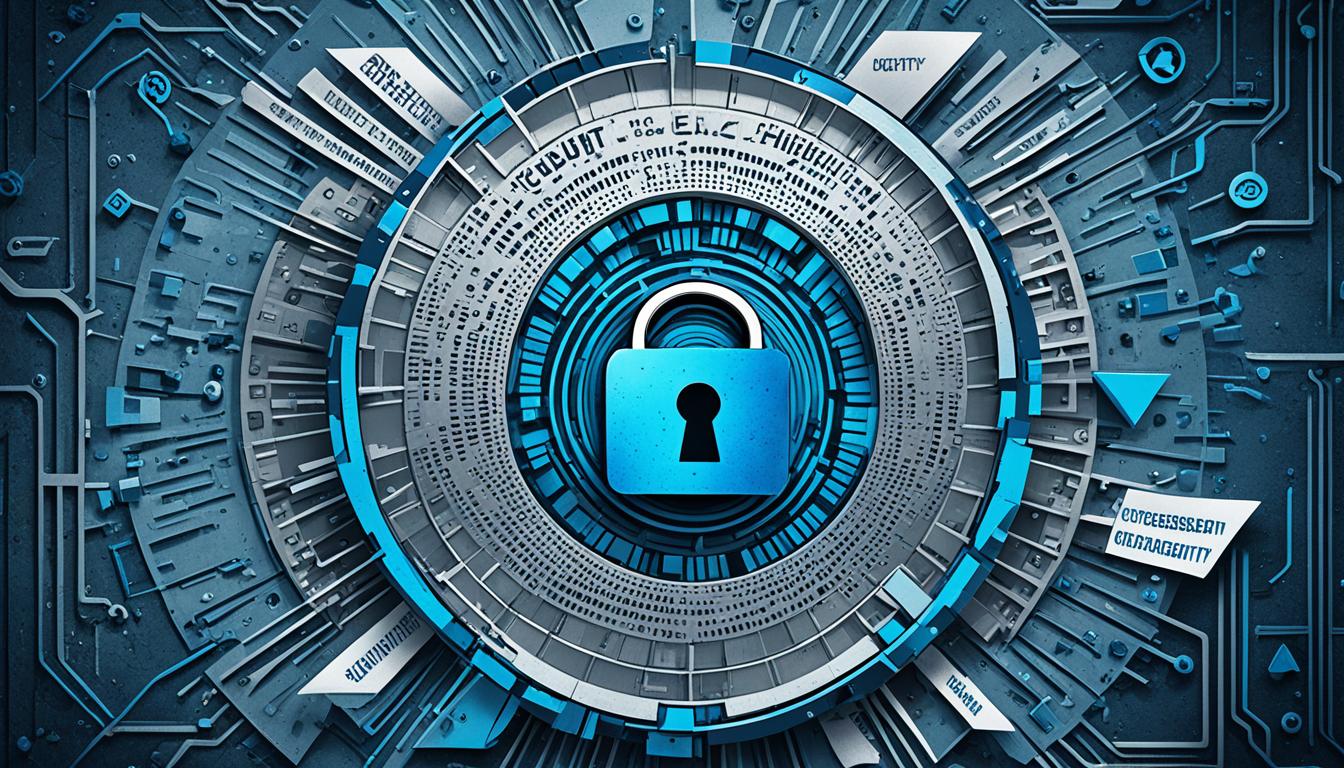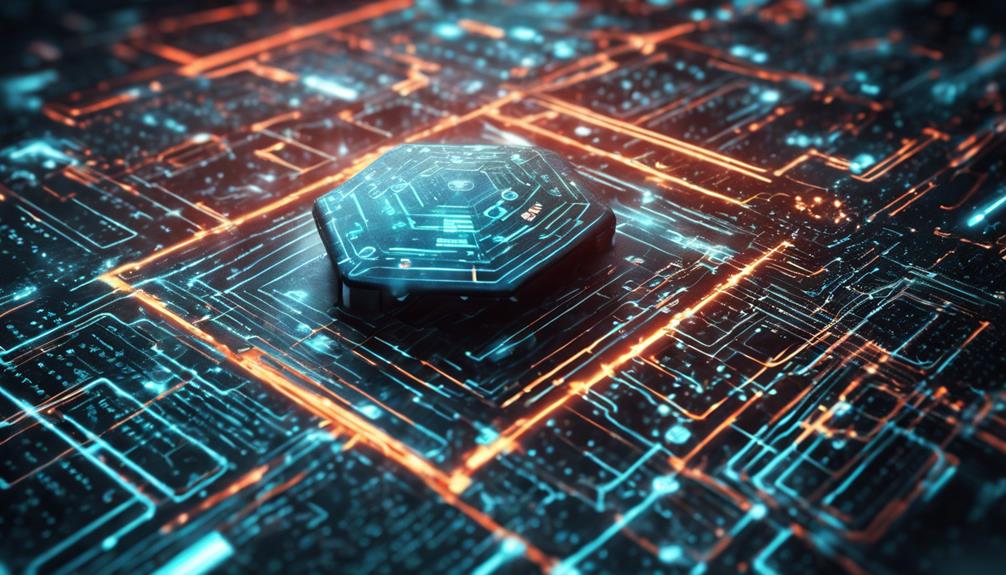Did you know that more than 80% of all attacks involve credentials use or misuse in the network1? With the increasing complexity of threats and the ongoing digital transformation, modern enterprises need a robust security framework to protect their valuable assets. That’s where Zero Trust security comes into play. Zero Trust Architecture is a strategic cybersecurity model that eliminates the concept of trust from an organization’s network architecture. It operates on the principle of “never trust, always verify” and is designed to enhance an organization’s security posture, reduce insider threats, provide agility and scalability, ensure regulatory compliance, and offer cost efficiency.
Implementing a Zero Trust framework involves a shift in both technology and culture. It requires organizations to have real-time visibility into hundreds of user and application identity attributes for Zero Trust policies1. By continuously verifying every attempt to access system resources, Zero Trust minimizes the attack surface and reduces the chances of unauthorized access. The Zero Trust model includes core principles such as continuous verification and limiting the “blast radius”1. It ensures that only authorized individuals, devices, and applications can access an organization’s systems and data, ultimately minimizing the impact of external or insider breaches1. Additionally, it aligns with the NIST 800-207 standard for security, which has been mandated for implementation by U.S. Federal Agencies1. The recent Sunburst attack in 2021 further showcased the importance of Zero Trust in preventing potential malicious actions in networks1.
Key Takeaways:
- Zero Trust Architecture eliminates the concept of trust from an organization’s network architecture, ensuring enhanced security and reduced insider threats.
- Implementing Zero Trust requires real-time visibility into user and application identity attributes and adherence to the NIST 800-207 standard
- The core principles of Zero Trust include continuous verification and limiting the “blast radius” to minimize the impact of breaches.
- Zero Trust is a response to securing digital transformation and the increasing complexity of threats.
- The adoption of a Zero Trust framework is crucial for modern enterprises to protect their valuable assets and maintain a strong security posture.
Understanding Zero Trust Architecture
Zero Trust Architecture is rooted in the principle of “never trust, always verify” and is designed to protect modern digital environments. It leverages network segmentation to prevent lateral movement, provides Layer 7 threat prevention, and simplifies granular user access control1. By continuously verifying every attempt to access system resources, Zero Trust minimizes the attack surface and reduces the chances of unauthorized access. It applies to all users, whether inside or outside the organization’s network.
Zero Trust Architecture transforms the traditional approach to network security by treating every user and device as a potential threat. In a Zero Trust environment, users and devices must continuously prove their identities and provide valid credentials for access, regardless of their location or the network they are connected to. This approach helps prevent lateral movement within the network, where an attacker gains access to one system and then uses that access to move laterally through the network, compromising additional systems along the way.
“Network segmentation is a fundamental component of Zero Trust Architecture, enabling organizations to divide their network into isolated segments to contain potential threats and limit their impact.”1
Layer 7 threat prevention is another critical aspect of Zero Trust Architecture. Layer 7 refers to the application layer of the network stack, where various protocols and services interact. By focusing on Layer 7, Zero Trust can more effectively detect and prevent advanced threats and attacks targeting specific applications or services. This granular approach adds an extra layer of security by inspecting application data and applying advanced threat detection techniques.
Zero Trust Architecture also emphasizes user access control, ensuring that only authorized users have access to specific resources and data. This level of control helps prevent unauthorized access and minimizes the potential damage that can be caused by compromised user accounts. By implementing strong authentication mechanisms, such as multi-factor authentication (MFA) and biometric verification, organizations can ensure that only legitimate users can access sensitive information.
The implementation of Zero Trust Architecture requires a holistic approach that combines various technologies and practices, including network segmentation, layer 7 threat prevention, and user access control. By adopting these principles, organizations can significantly enhance their security posture and protect their digital environments from sophisticated threats and attacks.
The Benefits of Zero Trust
Implementing Zero Trust architecture offers several key benefits that enhance an organization’s security posture, reduce insider threats, provide agility and scalability, ensure regulatory compliance, and offer cost efficiency. By incorporating Zero Trust principles, organizations can significantly strengthen their overall security framework.
Zero Trust architecture requires verified identity and device context for accessing corporate resources, ensuring only authorized users can access from verified devices2.
A well-implemented Zero Trust environment mandates comprehensive asset management, including understanding endpoints’ context and allowing user access based on meeting policy guidelines2.
Zero Trust networks leverage granular access controls, enabling better security control and automated controls based on real-time behavior analysis2.
Zero Trust enhances visibility into network traffic through continuous device, network, and application monitoring, enabling the detection of anomalous behavior2.
Automation is a key component in achieving advanced status in the DHS Zero Trust Maturity Model, reducing human intervention in basic security functions and improving efficiency2.
Zero Trust helps improve an organization’s security posture, leading to a reduction in the costs associated with data breaches and other security incidents2.
Compliance is improved with Zero Trust due to its continuous evolution with standards such as NIST, providing guidance on achieving Zero Trust2.
Implementing Zero Trust enables agencies to become more efficient, secure, and timely in their operations, especially with the help of analytics tools and automation2.
Through investing in Zero Trust now, companies can ensure a more secure future while freeing up resources for strategic tasks and reducing human errors in security processes2.

Enhanced Security Posture
One of the primary benefits of Zero Trust is the enhanced security posture it provides. By requiring continuous verification of every attempt to access system resources, Zero Trust minimizes the attack surface and reduces the chances of unauthorized access2.
Reduced Insider Threats
Zero Trust architectures mitigate insider threats by enforcing strict access controls and continuous authentication2. This approach ensures that only authorized individuals can access sensitive data and systems, reducing the risk of malicious insider activity.
Agility and Scalability
Zero Trust architectures offer agility and scalability, allowing organizations to easily adapt their security measures to support new applications, cloud-based services, and mobile systems2. This flexibility ensures that security keeps pace with technological advancements and changing business needs.
Regulatory Compliance
Implementing Zero Trust aids in regulatory compliance by providing detailed logs and clear visibility into data access2. By adhering to evolving standards such as NIST, organizations can ensure they meet regulatory requirements and industry best practices.
Cost Efficiency
Zero Trust helps organizations reduce costs associated with data breaches and other security incidents2. By proactively preventing security breaches and minimizing potential damages, organizations can avoid expensive remediation efforts and costly reputational damage.
Implementing Zero Trust in Your Organization
Implementing Zero Trust in an organization requires a comprehensive understanding of its principles and the adoption of appropriate technology solutions. It involves a significant shift in both technology and culture, necessitating comprehensive mapping of data flows, meticulous planning of access policies, and ongoing management of security measures. By following best practices and leveraging technology, organizations can successfully implement Zero Trust and enhance their security posture.
Zero Trust Implementation
The implementation of Zero Trust involves several key components. One crucial aspect is micro segmentation, which enables organizations to divide their networks into smaller, more manageable segments. By incorporating micro segmentation, organizations can isolate and manage data and applications more effectively, reducing the potential impact of a security breach.
Another vital aspect is identity and access management (IAM). IAM allows organizations to establish and enforce strict authentication and authorization policies, ensuring that only authorized individuals can access sensitive information and resources. By implementing robust IAM solutions, organizations can significantly enhance their security measures.
Analytics also play a crucial role in Zero Trust implementation. By leveraging analytics tools, organizations can gain insights into user behavior, network traffic patterns, and potential vulnerabilities. These insights enable organizations to identify and respond to threats more effectively, enhancing their overall security posture.
“Implementing Zero Trust requires a shift in technology and culture, comprehensive mapping of data flows, meticulous planning of access policies, and ongoing management of security measures.”3
Automation and Time-to-Value
The adoption of technology solutions plays a fundamental role in implementing Zero Trust. These solutions automate processes, enabling organizations to scale their security measures and streamline access verification. By automating human processes and verification at scale, organizations can reduce the risk of human error and improve overall efficiency.
Additionally, technology solutions help organizations achieve immediate time-to-value. They provide organizations with the necessary tools to deploy and manage Zero Trust architectures efficiently. This allows organizations to realize the benefits of Zero Trust quickly and effectively.
“Technology solutions supporting Zero Trust implementation enable organizations to automate human processes, automate verification at scale, and provide immediate time-to-value.”3
Implementing Zero Trust in an organization requires careful planning, the adoption of technology solutions, and ongoing management. By following best practices and leveraging the right tools, organizations can enhance their security posture and protect against evolving cyber threats.
Embracing Zero Trust for Enhanced Security
Embracing Zero Trust is essential for organizations looking to enhance their organizational security and protect their digital operations against evolving cyber threats.
Unlike traditional security models, Zero Trust goes beyond simply adding an extra layer of security. It transforms the very philosophy of organizational security, integrating security measures deeply into the fabric of digital operations.
“Implementing Zero Trust can lead to substantial cost efficiency by saving organizations millions that they would otherwise lose to recovery and remediation efforts after cyber-attacks.”4
By continuously verifying access and maintaining strict access controls, Zero Trust ensures network security by minimizing the attack surface and reducing the chances of unauthorized access.
“Zero Trust architectures can aid in regulatory compliance by providing detailed logs and clear visibility into data access, crucial for meeting standards set by regulations like GDPR and HIPAA.”4
Moreover, Zero Trust offers unmatched agility and scalability in dynamic IT environments. Organizations can readily adapt their security measures to support new applications and systems without compromising network integrity.
“Zero Trust offers unmatched agility and scalability in dynamic IT environments, allowing organizations to adapt security measures to support new applications and systems without compromising network integrity.”4
Zero Trust architectures are particularly effective in reducing insider threats, whether they are malicious or accidental. By enforcing strict access controls and continuous authentication, the risk of insider threats is significantly reduced.
“Insider threats, whether malicious or accidental, are significantly reduced through Zero Trust architectures by enforcing strict access controls and continuous authentication.”4
Implementing Zero Trust also enhances an organization’s security posture. By continuously verifying every access attempt and maintaining strict access controls, Zero Trust minimizes the attack surface and reduces the chances of unauthorized access.
“Zero Trust enhances an organization’s security posture by minimizing the attack surface and reducing chances of unauthorized access through continuous verification of every access attempt.”4
In conclusion, embracing Zero Trust is crucial for organizations seeking to enhance their security in the face of evolving cyber threats. By adopting Zero Trust principles and continuously verifying access, organizations can ensure robust organizational security, protect their digital operations, and stay one step ahead of potential cyber threats.
The Nuances of Zero Trust Security
Zero Trust security is a strategic cybersecurity model that is often described as both a platform and a principle. It is designed to protect modern digital business environments by eliminating the concept of trust and requiring continuous verification of users, devices, and applications.
The key principle of Zero Trust security is to “never trust, always verify.” This means that organizations should never automatically trust any entity, whether it’s an individual, device, or application, and should always verify their identity and permissions before granting access.
By adopting the Zero Trust security model, organizations can enhance their overall security posture and mitigate the risk of unauthorized access and data breaches. This approach helps protect sensitive data, prevent insider threats, and ensure the security of digital assets.
“Ransomware breaches rose by 13% in 2021, representing an increase greater than the past five years combined.”5
Zero Trust security consists of various elements and strategies that work together to create a comprehensive security framework. It addresses multiple aspects of cybersecurity, including identity management, device security, network protection, application workload security, and data security.
The Zero Trust model comprises five critical pillars:
- Identity: This pillar focuses on verifying the identity of users, devices, and applications before granting access. It involves strong authentication, continuous approval and authorization, and secure least privilege access.
- Device: This pillar ensures that devices are secure and trusted before accessing an organization’s systems and data. It involves device authentication, security posture assessment, and continuous monitoring.
- Network: This pillar focuses on securing the network infrastructure and isolating breaches in network segments through microsegmentation. It reduces the impact of attacks and prevents lateral movement within the network.
- Application Workload: This pillar protects the security and integrity of application workloads by continuously monitoring and updating security protocols. It involves vulnerability management, threat intelligence, and secure configuration management.
- Data: This pillar focuses on protecting sensitive data by encrypting it and controlling access to it. It involves data classification, encryption, access control, and data loss prevention measures.
The Zero Trust security model emphasizes the principle of “never trust, always verify” for user and device authentication. This means that access should be continuously verified, and access decisions should be based on risk-based factors such as user behavior, device health, and the sensitivity of data being accessed.
Organizations are increasingly adopting the Zero Trust security model to enhance their data security and comply with industry standards and regulations. By implementing Zero Trust principles and best practices, organizations can significantly improve their cybersecurity posture and protect against evolving threats.
“More than half of global organizations surveyed have either implemented or initiated the implementation of a well-defined Zero Trust strategy across their IT real estate.”6
One of the key benefits of Zero Trust security is its adaptability to modern decentralized work environments. With the rise of remote work and the use of cloud services, organizations need to ensure that network connections and access to resources are scrutinized and secured.
Continuous monitoring and analysis of user behavior in networks play a crucial role in identifying malicious activities and detecting potential security breaches. Behavioral analytics is used to detect anomalies and patterns that indicate a potential cybersecurity threat.
Encryption of data is another important aspect of Zero Trust security. By encrypting data, organizations can prevent unauthorized access and protect sensitive information from being leaked or compromised.
Organizations that embrace the Zero Trust security model prioritize the continuous monitoring and updating of security protocols. With the evolving threat landscape, it is crucial to stay vigilant and adapt security measures to address new vulnerabilities and emerging risks.
By adopting Zero Trust principles and implementing the necessary technology solutions, organizations can create a robust security posture and stay ahead of evolving cyber threats. It is essential to adopt strong, adaptive authentication; continuous approval and authorization; secure least privilege access; continuous monitoring and attestation; and credential and authentication protection as part of Zero Trust implementation.
“Microsegmentation reduces the impact of attacks by isolating breaches in network segments.”6
| Key Aspects of Zero Trust Security | Statistical Data |
|---|---|
| Principles | 6 |
| Pillars | 6 |
| Breach statistics | 5 |

The Evolution of Zero Trust
As digital environments and cloud services continue to shape the way organizations operate, the evolution of Zero Trust has become essential in ensuring robust security in today’s dynamic landscape. Traditional approaches that relied on perimeter defenses to keep out malicious actors are no longer sufficient in safeguarding modern enterprise networks4. Zero Trust architecture, on the other hand, embraces the principle of “never trust, always verify” to secure identities, endpoints, applications, data, infrastructure, and networks4. By shifting the focus from perimeter protection to continuous verification, Zero Trust minimizes the attack surface and provides organizations with greater visibility, automation, and orchestration4.
Cloud services have become integral to modern businesses, enabling agility and scalability. However, they also introduce new security challenges. Zero Trust addresses these challenges by applying the same stringent access controls and authentication mechanisms to cloud services as it does to on-premises systems4. This ensures that each access attempt is continuously verified, regardless of the location of the resources.
In addition to cloud services, the rise of hybrid work models has further emphasized the need for Zero Trust. With employees working from various locations and using different devices, the traditional boundary between the corporate network and external networks has blurred. Zero Trust provides a comprehensive security framework that enables organizations to securely manage access and protect data in a hybrid work environment4.
By adopting Zero Trust principles, organizations can effectively address the evolving threat landscape and the demands of digital transformation. It offers unparalleled agility and scalability, making it easier for organizations to adapt their security measures to changing IT environments without compromising network integrity4. Not only does Zero Trust enhance security, but it also aids in meeting regulatory compliance standards by providing detailed logs and visibility into data access for audits4. Moreover, the initial investment in technology and training required for implementing Zero Trust architecture leads to long-term cost efficiency by preventing data breaches and minimizing cyber-attack damages4.
Benefits of Zero Trust Evolution
The evolution of Zero Trust brings numerous benefits to modern enterprises:
- Enhanced Security Posture: Zero Trust architecture significantly improves an organization’s security posture by requiring continuous verification of every access attempt, minimizing the attack surface4.
- Reduced Insider Threats: By enforcing strict access controls and continuous authentication, Zero Trust architectures effectively mitigate the risks posed by insider threats4.
- Agility and Scalability: Zero Trust offers unmatched agility and scalability, allowing organizations to adapt their security measures to evolving IT environments without compromising network integrity4.
- Regulatory Compliance: Zero Trust architectures aid in regulatory compliance by providing detailed logs and visibility into data access for audits, ensuring organizations meet stringent compliance standards such as GDPR and HIPAA4.
- Cost Efficiency: Although there is an initial investment in technology and training, implementing Zero Trust architecture leads to long-term cost efficiency by preventing data breaches and minimizing cyber-attack damages4.
| Statistic | Percentage |
|---|---|
| Organizations with a defined zero-trust initiative underway | 55%7 |
| Security decision-makers recognizing the critical nature of zero trust in organizational success | 96%7 |
| Government organizations with a defined zero-trust security initiative or planned implementation | 72% (government)7 55% (global non-government)7 |
| Organizations that have started implementing a zero-trust strategy | 76%7 |
| Organizations that believe they have fully implemented a zero-trust strategy | 35%7 |
With the rapid evolution of digital environments, the reliance on cloud services, and the increasing adoption of hybrid work models, Zero Trust continues to evolve as a critical security framework for modern enterprises4. By embracing this approach, organizations can confidently navigate the challenges of today’s dynamic digital landscape while maintaining robust security and protecting their valuable assets.
The Importance of Identity Security in Zero Trust
Identity security is a central pillar of Zero Trust, ensuring that access is granted based on least privilege and securing access for humans and machines across any device and location4. It encompasses unified access controls, including privilege management, to isolate and stop attacks, protect critical assets, and grant access for the right amount of time4. By automating the management of the identity lifecycle and continually monitoring for threats, organizations can adjust controls based on user behavior and ensure a robust security posture4.
The Zero Trust Implementation Principles
Implementing Zero Trust requires organizations to adhere to a set of key principles that ensure robust security measures and protect against evolving cyber threats.
Strong Authentication
Strong authentication is a cornerstone of Zero Trust implementation. By requiring users to provide multiple factors of authentication, such as passwords and biometrics, organizations can ensure that only authorized individuals can access their systems and data. This1 principle adds an extra layer of security and helps prevent unauthorized access.
Continuous Approval and Authorization
Continuous approval and authorization is an essential aspect of Zero Trust. Access decisions are continually evaluated based on risk-based factors, such as user behavior and device attributes. By continuously monitoring access requests, organizations can identify and respond to potential threats in real-time. This1 ensures that only trusted entities are granted access to enterprise or cloud assets.
Least Privilege Access
Zero Trust enforces the principle of least privilege access, which means granting users the minimum level of access necessary to perform their tasks. This approach minimizes the potential damage that can be caused by compromised accounts and reduces the threat of lateral movement within the network. By strictly controlling access permissions, organizations can limit the blast radius of any potential breaches. This1 is crucial in maintaining secure environments.
Continuous Monitoring and Attestation
Continuous monitoring and attestation involve the ongoing validation of user and device privileges and attributes. By regularly monitoring and evaluating access, organizations can detect and respond to any anomalies or suspicious activities. This1 ensures that access remains trusted and authorized throughout an entity’s interaction with the system.
Credential and Authentication Protection
Protecting credentials and authentication mechanisms is paramount in Zero Trust implementation. Considering that more than 80% of attacks involve credential use or misuse within networks, organizations must employ robust security measures to prevent unauthorized access. This1 may include secure web gateway providers, encryption of credentials, and implementing measures to counter constant attacks against credentials and identity stores.
By following these Zero Trust implementation principles, organizations can establish a comprehensive security framework that mitigates risks and provides a strong defense against cyber threats. Continuously verifying access, basing authorization on risk factors, granting least privilege access, monitoring for anomalies, and protecting credentials are essential components of a successful Zero Trust implementation. Organizations must evaluate their IT infrastructure and potential attack paths to contain and minimize the impact of breaches. It is through these principles that Zero Trust can provide a secure foundation for modern enterprises.
Zero Trust Use Cases
Zero Trust architecture offers a versatile framework that can be applied to various use cases, including securing remote workers, hybrid cloud environments, and addressing ransomware threats. This section explores how Zero Trust principles can be effectively implemented in these scenarios to enhance security and protect sensitive data.
Securing Remote Workers
In today’s increasingly remote work landscape, organizations face unique challenges in ensuring the security of their distributed workforce. Zero Trust provides a robust security framework that focuses on continuous verification and access control. By implementing Zero Trust principles, organizations can establish secure connections for remote workers, enforce strong authentication measures, and monitor user and device attributes in real-time – helping to mitigate the risks associated with remote work and safeguard sensitive data (Source:1).
Securing Hybrid Cloud Environments
Hybrid cloud environments, which combine on-premises infrastructure with public and private cloud resources, introduce complexity and potential vulnerabilities. Zero Trust helps secure these environments by enforcing continuous verification of user identities and device attributes, limiting access privileges based on the principle of least privilege, and monitoring data flows and interactions between different cloud components. By adopting Zero Trust principles, organizations can protect critical data and applications, regardless of their location or hosting environment (Source:1).
Addressing Ransomware Threats
Ransomware attacks continue to pose a significant threat to organizations worldwide. Zero Trust architecture offers a proactive approach to mitigate the risk of ransomware attacks by deploying robust security measures such as continuous monitoring, strict access controls, and separating critical data and systems from potential threats. Zero Trust’s emphasis on verification and automatically responding to anomalous behavior helps detect and contain ransomware threats effectively (Source:1).
Example Table for Zero Trust Use Cases
| Use Case | Description |
|---|---|
| Securing Remote Workers | Protecting remote workers and their devices from potential security threats while ensuring secure access to organizational resources. |
| Securing Hybrid Cloud Environments | Securing data and applications in hybrid cloud environments by implementing strong authentication, access controls, and continuous monitoring. |
| Addressing Ransomware Threats | Implementing measures to detect, prevent, and mitigate the risks associated with ransomware attacks, such as continuous monitoring and strict access controls. |

Zero Trust and NIST 800-207
NIST 800-207, a widely recognized cybersecurity framework, aligns with the Zero Trust model and provides comprehensive standards for implementing Zero Trust1. This framework serves as a vendor-neutral guide for both government agencies and private organizations, ensuring consistent and effective implementation of Zero Trust principles. Recognizing the importance of Zero Trust security, the Biden administration issued an executive order in May 2021 mandating U.S. Federal Agencies to adhere to NIST 800-207 for Zero Trust implementation1.
The Zero Trust architecture, as defined by NIST 800-207, requires organizations to continuously monitor and validate user and device privileges and attributes1. By employing this approach, organizations can ensure that only authorized individuals, devices, and applications have access to their systems and data. Zero Trust policies rely on real-time visibility into hundreds of user and application identity attributes, enhancing security and preventing unauthorized access1.
The Sunburst attack of 2021, which affected numerous organizations, showcased the significance of implementing the principle of least privilege and enforcing strict policies for all accounts1. The Zero Trust model, based on NIST 800-207, places a strong emphasis on continuous verification, limiting the “blast radius” of potential security breaches, and automating context collection and response1. By adhering to the guidelines provided in NIST 800-207, organizations can enhance their security posture and effectively mitigate cyber threats.
| Statistical Data | Source |
|---|---|
| NIST 800-207 | Document |
| Implementation Mandate | Biden Administration |
| Implementation Guidelines | Federal Agencies |
| Importance of Continuous Verification | Zero Trust Model |
Zero Trust and the Principle of Least Privilege
Zero Trust architecture is a critical component of modern cybersecurity strategies, providing deeper levels of protection against evolving threats faced by traditional computers and mobile devices on all platforms. It follows the concept of “never trust, always verify,” emphasizing that users and devices shouldn’t be trusted by default, even when connected to a permissioned network. This approach ensures that access is continuously verified before granting entry, minimizing the risk of unauthorized access and potential data breaches 8.
The concept of Zero Trust originated with Stephen Paul Marsh in 1994 and was popularized by John Kindervag of Forrester Research in 2010. Its adoption has gained traction as organizations seek to enhance their security postures and address the changing threat landscape. Alongside Zero Trust, the principle of least privilege plays a pivotal role in ensuring system integrity and reducing the attack surface 8. Designed by the National Institute of Standards and Technology (NIST), least privilege entails granting entities the minimum system resources and authorizations required to perform their intended functions 8.
Implementing the principle of least privilege involves logically assigning the minimum level of permissions necessary for users to perform their job-related functions effectively. By adopting this approach, organizations can strike a balance between productivity and security, reducing the potential for unauthorized access and lateral movement within their networks 8.
When comparing Zero Trust Network Access (ZTNA) and Virtual Private Networking (VPN), the principle of least privilege adds extra layers of protection in the Zero Trust model. Through microtunnel creation for resource requests, endpoint and credential use monitoring, and granular permissions limiting user interactions, least privilege strengthens the overall security posture 8.
In the Zero Trust model, the focus lies in verifying device and user credentials prior to granting access to protected resources. On the other hand, the principle of least privilege restricts user access permissions exclusively to job-related tasks, effectively reducing the attack surface without impeding productivity 8.
Zero Trust and the principle of least privilege are distinct security approaches in their own right, but they are often used together as part of a comprehensive security strategy. By combining the verification-centric model of Zero Trust with the granular access control offered by the principle of least privilege, organizations can ensure robust protection against potential threats while empowering their users to fulfill their roles effectively 8.
Zero Trust and Continuous Verification
Zero Trust, an essential cybersecurity framework, relies on continuous verification to make access decisions, ensuring robust security for modern enterprises. It incorporates behavioral data and provides real-time visibility into user behavior, device attributes, and system security4. By continuously vetting access requests, Zero Trust ensures that only authorized users and devices are granted access to enterprise or cloud assets, effectively preventing potential threats4. This approach enables organizations to quickly identify and respond to anomalies or compromised identities, bolstering their overall security posture4.
Conclusion
Zero Trust security is essential for modern enterprises aiming to enhance network security, protect data, manage identities, prevent threats, and ensure the security of their remote workforce. Companies globally are increasingly adopting the zero-trust security model2 to secure their enterprises, especially as employees work from home on multiple devices2. Zero Trust involves controlling access to all corporate resources, not just data2. It is defined by DHS’s Cybersecurity & Infrastructure Security Agency (CISA) as a way to enforce accurate, least privilege per-request access2.
The major benefits of zero trust include improved security measures, greater control, increased visibility, improved compliance, increased efficiency, and a more secure future2. Zero trust requires continuous device, network, and application monitoring to increase visibility2, making it an ongoing process that requires continuous monitoring, improvement, and alignment with best practices and industry standards. NIST has provided guidance on achieving Zero Trust over the last 5 years2. Automation is key to achieving advanced status in the Zero Trust Maturity model2.
Implementing Zero Trust Architecture is crucial in addressing internal threats and reducing the risk of unauthorized access9. It simplifies security management through automation and continuous monitoring, enabling quick threat detection and response9. Approximately 76% of large organizations have already implemented Zero Trust Architecture, indicating a significant adoption rate9. Enhanced protection against cyber threats is a primary advantage of Zero Trust, with internal actors responsible for 60% of data breaches9. Regular employee training and simulated phishing tests are also essential components of successful Zero Trust implementation9.
To implement zero trust security, organizations may benefit from the assistance of an MSP to assess their security position and help with the journey towards digital transformation2. By adopting Zero Trust principles and implementing the necessary technology solutions, modern enterprises can create a robust security posture and stay ahead of evolving cyber threats10. Zero Trust is a comprehensive framework that goes beyond traditional perimeter security controls, focusing on identity-based security defenses and continuous verification10.
FAQ
What is Zero Trust Architecture?
How does Zero Trust Architecture enhance security?
What are the benefits of Zero Trust?
How do you implement Zero Trust in an organization?
Why is embracing Zero Trust important for organizational security?
Is Zero Trust a platform or a principle?
How has Zero Trust evolved?
What is the importance of identity security in Zero Trust?
What are the implementation principles of Zero Trust?
What are some use cases for Zero Trust?
How does Zero Trust align with NIST 800-207?
What is the principle of least privilege in Zero Trust?
How does Zero Trust ensure continuous verification?
Why is Zero Trust crucial for modern enterprises?
Source Links
- https://www.crowdstrike.com/cybersecurity-101/zero-trust-security/
- https://redriver.com/security/benefits-of-zero-trust
- https://www.bankofamerica.com
- https://www.linkedin.com/pulse/zero-trust-architectures-why-essential-modern-rew0e
- https://www.cyberark.com/resources/blog/what-is-zero-trust-and-why-is-it-so-important
- https://securityscorecard.com/blog/what-is-the-zero-trust-security-model/
- https://www.techtarget.com/whatis/feature/History-and-evolution-of-zero-trust-security
- https://www.jamf.com/blog/zero-trust-vs-least-privilege/
- https://aredgroup.com/why-zero-trust-architecture-is-critical-for-security/
- https://www.spiceworks.com/it-security/network-security/guest-article/why-enterprises-need-zero-trust-security/









